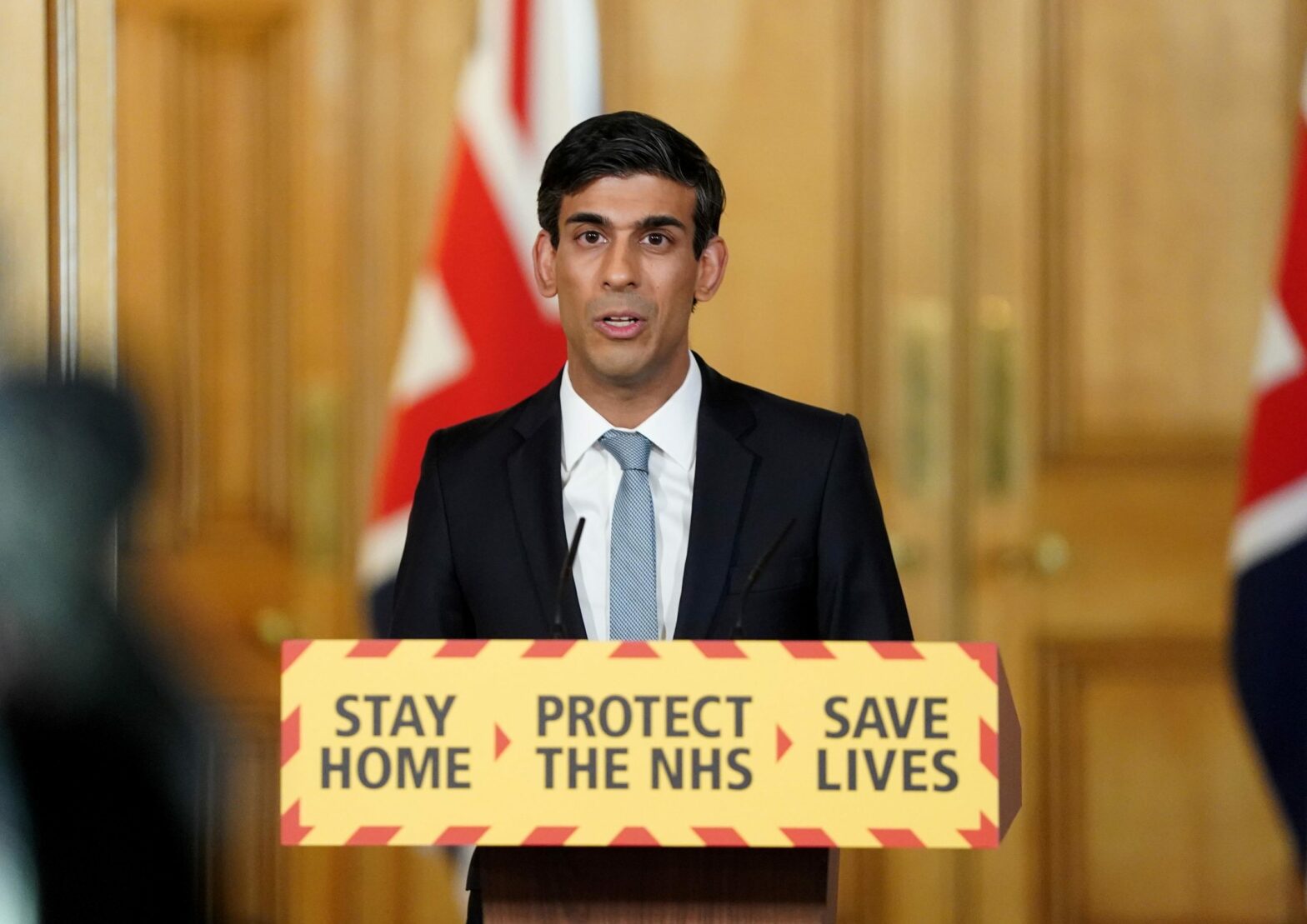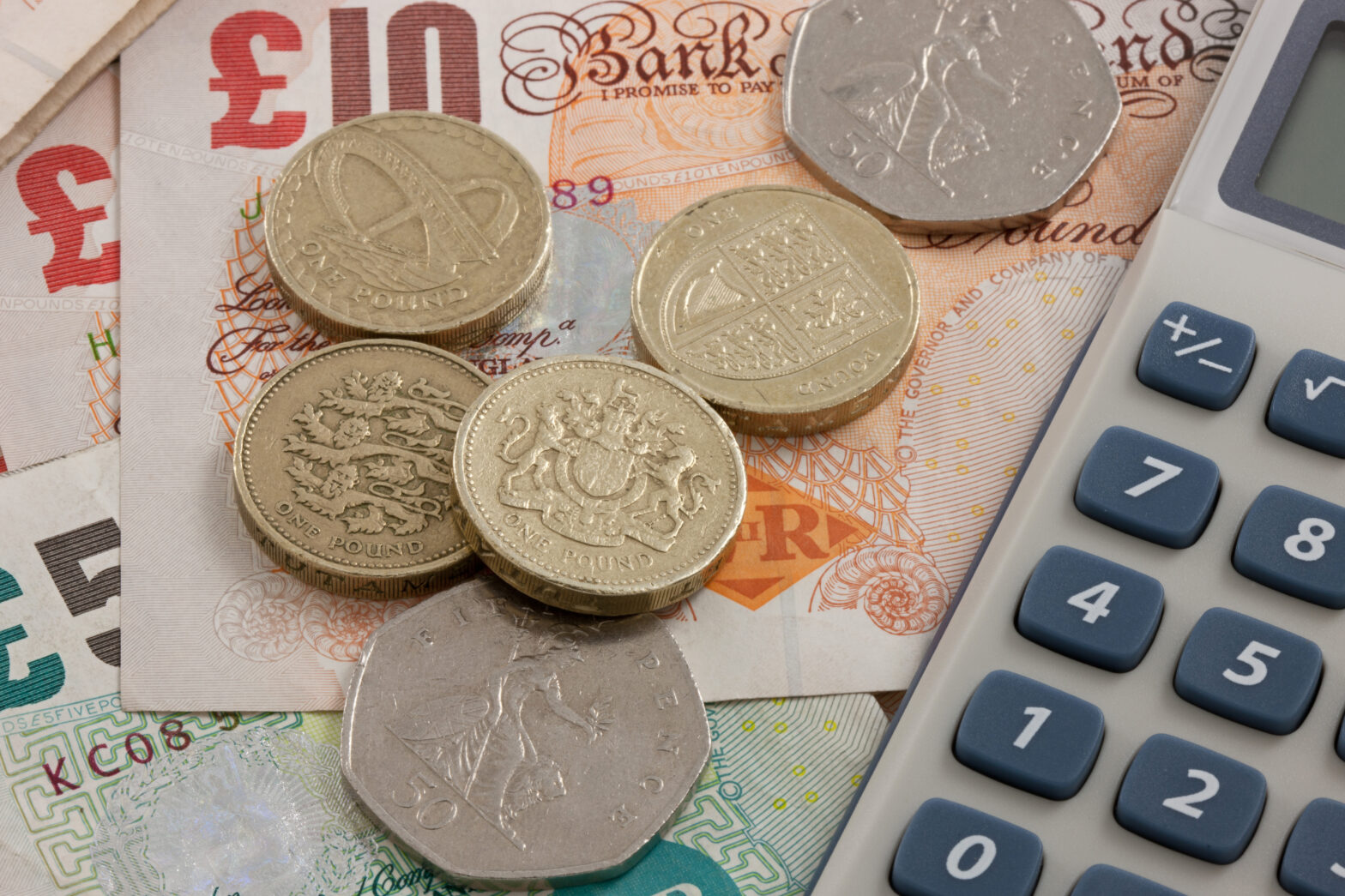UPDATED: The chancellor is extending the repayment period on Bounce Back Loans for 1.4m small businesses.
Small firms will have ten years to repay instead of the previous six years, as announced by Sunak in September 2020. Interest on extended loans will be at a fixed rate of 2.5 per cent.
Businesses can also choose to make interest-only payments for six months (this option is available up to three times on the length of the loan) or pause repayments for up to six months (this option is only available once).
Lenders will start communicating these options to customers three months before repayments begin and advise them on how each option may affect their payment profile. They contact customers directly so there’s no need to get in touch with them.
The Bank of England’s regulation chief is warning that half of Bounce Back Loans will go sour.
What’s more, figures from the Office of National Statistics show that 14 per cent of businesses think they have little or no chance of surviving the next three months.
Last year, the government extended the application for Bounce Back Loans until the end of March 2021. Previously, the loan deadline was extended to January 31 2021.
We’ve answered some of the most frequently asked questions around the scheme.
Can I have 2 Bounce Back Loans?
You can’t get two different bounce back loans as such. However, because of recent changes, you can ‘top up’ your existing bounce back loan if you haven’t borrowed the maximum sum.
How can I extend/increase a Bounce Back Loan?
The best way to increase your loan is to top it up (if you haven’t claimed the maximum sum that you’re eligible for already).
When does the Bounce Back Loan end?
The Bounce Back Loan will end at the end of March 2021.
Will Bounce Back Loans be written off?
Bounce Back Loans can be written off as it’s a loan to your company, not you as an individual. In the event that your company goes into liquidation or into administration, your loan will be written off.
Estimates say that a significant proportion of Bounce Back Loans will be written off. The Office for Budget Responsibility (OBR) reckon that up to 40 per cent of Bounce Back Loans could be irrecoverable.
Will there be a second Bounce Back Loan?
There has been no word of a second Bounce Back Loan.
Bounce Back Loans so far
More than 100,000 small businesses applied for the new state-backed loans within hours of their launch.
Barclays said it had approved 6,000 loans worth a total of £200m by 20m, while Santander received 10,500 applications and Royal Bank of Scotland – which has taken on 50 per cent more call-centre staff to handle Bounce Back loan applications – had received 22,000 by 2pm.
By 5pm, Lloyds reported it had received over 26,500 loan applications for the loans while Royal Bank of Scotland had received 30,000 and Santander 18,000.
HSBC said it had received 34,500 applications, although 14,700 were from new customers who needed to complete fraud checks first.
To put this in context, small and medium-sized business normally take out about 20,000 loans a month.
Lloyds, Barclays and RBS are offering Bounce Back Loans to existing customers first because they have completed anti-money laundering and other checks, making it easier to fulfill the government’s wish for the money to flow to borrowers’ accounts within 24 to 48 hours.
Only HSBC is accepting microbusinesses from non-customers.
Yesterday, David Oldfield, head of commercial banking at Lloyds, told MPs on the Treasury select committee that about 11 per cent of small businesses normally failed, rising to 30 per cent in the 2007-09 financial crisis.
Anne Boden, the chief executive of Starling, told MPs she was concerned that bank processes “won’t take the strain” and she thinks there could be a “scale problem here”.
Government launches Bounce Back Loans scheme
The government has launched its Bounce Back Loans scheme, offering loans of between £2,000 and £50,000 at a fixed interest of 2.5 per cent.
The 2.5 per cent fixed interest rate is to encourage take-up of Bounce Back Loans compared to the sluggish demand for emergency coronavirus business loans. Nearly 60 per cent of small businesses are not going to take out a Coronavirus Business Interruption Loan, according to the British Chambers of Commerce.
And this 2.5 per cent ceiling only kicks in after the 12-month, interest-free period has kicked in.
This is less than half of the minimum interest rate being charged for Coronavirus Business Interruption Loans (CBILS).
Rishi Sunak, the chancellor, said: “Small businesses will play a key role creating jobs and securing economic growth as we recover from the Coronavirus pandemic. The Bounce Back loan scheme will make sure they get the finance they need – helping them bounce back and protect jobs.”
Microbusiness £50,000 Bounce Back Loans – how they work
The government has launched its microbusiness Bounce Back Loans scheme with a higher than expected £50,000 limit and a 100 per cent guarantee.
- Businesses will be able to borrow between £2,000 and £50,000 and access the cash within days
- There is no cap on turnover for a microbusiness applying for a BBL
- Loans will be from £2,000 up to 25 per cent of a business’ turnover or £50,000, whichever is lower
- Loans will be interest free for the first 12 months, and businesses can apply online through a short and simple form
- Borrowers will fill in a two-page application form in which they will certify that they have a viable business, lifting obligations on lenders to carry out their own checks
- The length of the loan is for six years but early repayment is allowed, without early repayment fees
- No personal guarantees are allowed, and no recovery action can be taken over a principal private residence or principal private vehicle
- All firms trading as of March 1 will be able to get cash
- Banks will no longer require forward financials or business plans
- If you’ve already had a coronavirus business interruption loan of up to £50,000, that will be ported across to the Bounce Back Loans scheme
- Eligible companies will be subject to standard customer fraud, anti-money laundering (AML) and Know Your Customer (KYC) checks prior to any loan being made
- The borrower always remains 100% liable for the debt
Is your microbusiness eligible for a Bounce Back Loan?
Any business can apply for a microbusiness loan, however:
- You must be UK-based and established by March 1 2020
- Have been adversely impacted by the Coronavirus (Covid-19)
- Confirm you are currently not using a government-backed Coronavirus loan scheme (unless using BBLS to refinance a whole facility)
- You must not be in bankruptcy, liquidation or undergoing debt restructuring
Where to find your Bounce Back Loan
Accredited lenders of Bounce Back Loans are listed on the British Business Bank website:
- Allied Irish Bank
- Arbuthnot Latham
- Bank of Ireland
- Bank of Scotland
- Barclays
- Clydesdale Bank & Yorkshire Bank
- Coutts
- Danske Bank
- Funding Circle
- HSBC
- Investec
- Lloyds
- Metro Bank
- NatWest
- Paragon Bank
- RBS
- Santander
- Skipton Business Finance
- Starling Bank
- The Co-operative Bank
- Tide
- TSB
- Ulster Bank
However, Metro Bank is conspicuously absent, as well as any fintechs, which will find it difficult to lend commercial money compared to this extraordinarily cheap credit.
As one financial technology expert told the Times, why would you go to an alternative lender that may charge a high interest rate “when you can get [close to] free money from the bank”?
And, given that microbusinesses are being asked to apply to their own banks for BBLs, the current absence of Metro for its business customers.
How to apply for a Bounce Back Loan
Businesses will be required to fill in a short online application form on their lender’s website, which self-certifies whether they are eligible for a Bounce Back Loan facility. Eligible companies will be subject to standard customer fraud, Anti-Money Laundering (AML) and Know Your Customer (KYC) checks.
Some State aid restrictions may apply to applications.
Pulling loans out of Consumer Credit Act
The chancellor and his team have also pulled Bounce Back Loans of less than £25,000 out of the Consumer Credit Act 1974 in order to speed up implementation.
At the same time, the government will introduce legislation as early as possible to waive sections 140A-140C of the Consumer Credit Act for BBLS lending. Bankers were worried that they could fall foul of the Consumer Credit Act that they cannot lend money knowingly to failing businesses.
Also, as things stand with the Consumer Credit Act, if a microbusiness borrower gets into trouble, it could claim the loan terms created an unfair relationship between them and the lender and the banks would have to prove it didn’t.
Bounce Back Loans should be grants
Mark Neath, director at Old Mill, argues that because the government appears to have already accepted many of these Bounce Back Loans will go bad, why not just make the money grants instead of loans?
Neath said: “Why not simply give a grant and spare the banks and business owners a lot of work and ultimately stress and pain to end up at the same place?
“The media narrative I keep reading day after day is that banks’ lending criteria are denying loans to businesses. Perhaps the story ought to read: banks’ lending criteria protect businesses from inappropriate borrowing.”
Crying out
Emma Jones, founder, small business support network Enterprise Nation, said: “These new ‘bounce-back loans’ will close one of the gaps facing micro firms. The chancellor is correct that this group are less keen and less able to take on debt under normal circumstances – but may now feel slightly more confident that this bridging finance now exists.
“The big question now is whether the banks can actually make this work and get those loans out of the door in 24 hours. The other question is over whether they will be affordable in the long run.”
Rain Newton-Smith, CBI chief economist, said: “The chancellor is standing shoulder-to-shoulder with small businesses to help them through the crisis. A 100 per cent government guarantee on loans and a simple way of applying will be a lifeline to many small businesses and sole traders under pressure.
“Banks have been operating at full throttle and must stay in overdrive to get more money out of the door faster. Time is of the essence.”
Brian Palmer, tax policy expert at the Association of Accounting Technicians, added: “The launch of the Bounce Back Loan, supported by government guarantees, a low rate of interest, no arrangement fees and a 24-hour turnaround is just the sort of thing that small businesses have been crying out for. The loan amounts aren’t huge but are significant enough to be of immediate help. However, there will be some fears that when lockdown is eased, the bounce back may not be robust enough to enable small businesses to meet the repayments.”
Further reading
Treasury bails out small businesses in co-working spaces
Useful link: Looking for funding? Find the right finance for your business here – Complete a few quick details on our form and we’ll match you with the right lender.





